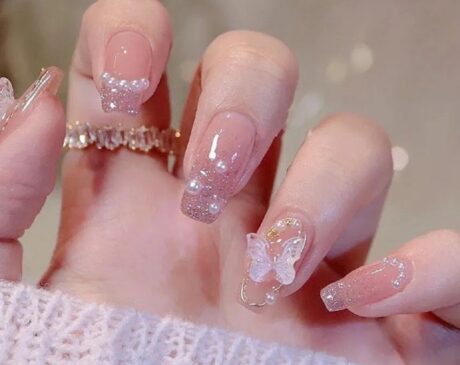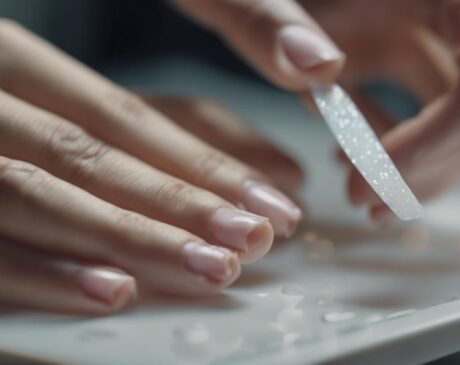What Is the Difference Between Nail Adhesive and Nail Glue?
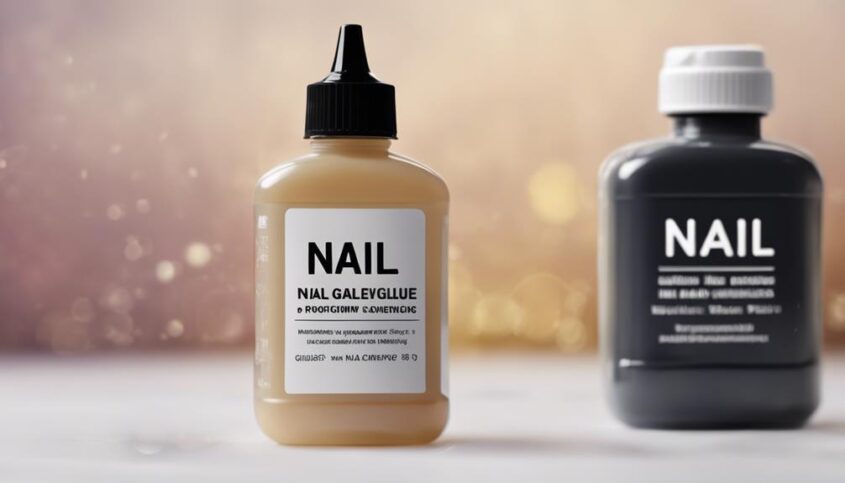
Nail adhesive is specialized for attaching artificial nails securely using various techniques. Nail glue, a fundamental adhesive, offers strong and long-lasting bond formulations like cyanoacrylate and gel-based. Adhesive is great for extensions, ensuring a lasting hold, while glue excels in intricate nail art designs. Glue provides durability and strength for extended wear. DIY removal involves gentle soaking or peeling methods. Precision application techniques are vital for optimal results. For more details on composition, application tips, and recommended products, explore the full research available.
Key Takeaways
- Nail adhesive is cyanoacrylate-based, while nail glue is ethyl cyanoacrylate-based.
- Adhesive is used for attaching extensions, while glue is common for intricate nail art.
- Adhesive offers flexibility for temporary wear, while glue provides a stronger, longer-lasting bond.
- Removal methods vary; adhesive can be softened with acetone, while gentle peeling works for glue.
- Precision in application is crucial; proper cleaning, shaping, and amount used ensure secure bonding.
Definition of Nail Adhesive
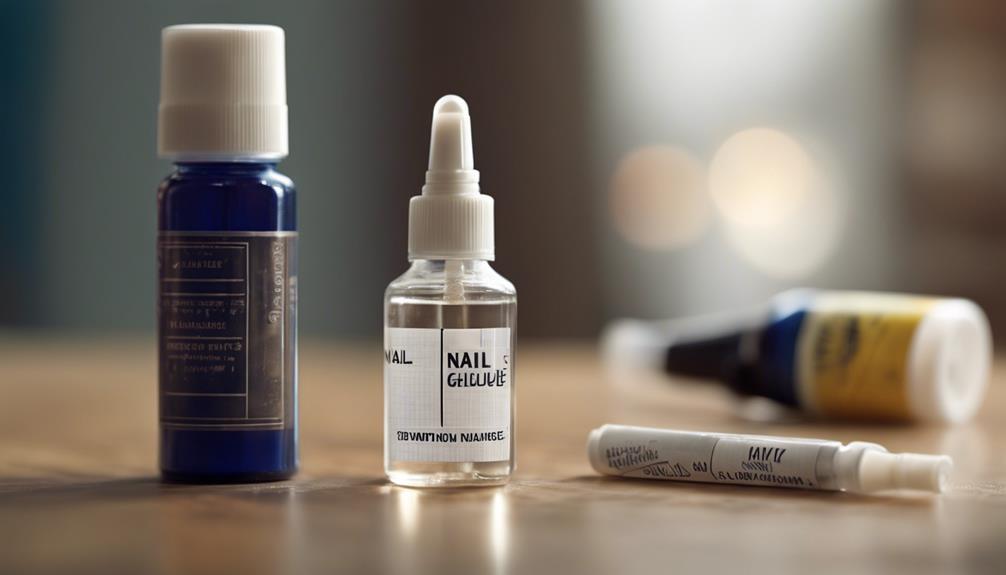
Nail adhesive is a specialized product used in the beauty industry to attach artificial nails securely to natural nails. This innovative product offers various application techniques to ensure a strong and lasting bond between the artificial nail and the natural nail bed. Whether using brush-on, squeeze tube, or pen-style applicators, nail technicians can apply the adhesive with precision, catering to different preferences and nail types.
In addition to its application techniques, nail adhesive also boasts efficient removal methods. When it comes time to remove the artificial nails, technicians can use acetone or nail adhesive remover to dissolve the bond gently. This ensures a seamless and damage-free removal process, leaving the natural nails healthy and intact.
Definition of Nail Glue
A key component in the realm of nail care products, nail glue serves as a fundamental adhesive in the application and maintenance of artificial nails. Nail glue comes in various formulations, each designed to cater to different needs and preferences. The application process of nail glue is crucial for achieving long-lasting and professional results. It is essential to follow the instructions carefully to ensure a secure bond between the natural nail and the artificial enhancement.
To provide a clearer understanding, let's explore the different formulations and application process of nail glue in the table below:
| Formulation | Characteristics | Application Process |
|---|---|---|
| Cyanoacrylate | Quick-drying, strong bond | Apply a thin layer, press and hold for a few seconds |
| Resin-based | Flexible, ideal for nail art designs | Brush on like polish, cure under a UV lamp |
| Gel-based | Thicker consistency, suitable for thicker nails | Use a precision applicator for controlled application |
Understanding the nuances of these formulations and their respective application processes can elevate the outcome of your nail enhancement endeavors.
Composition Differences
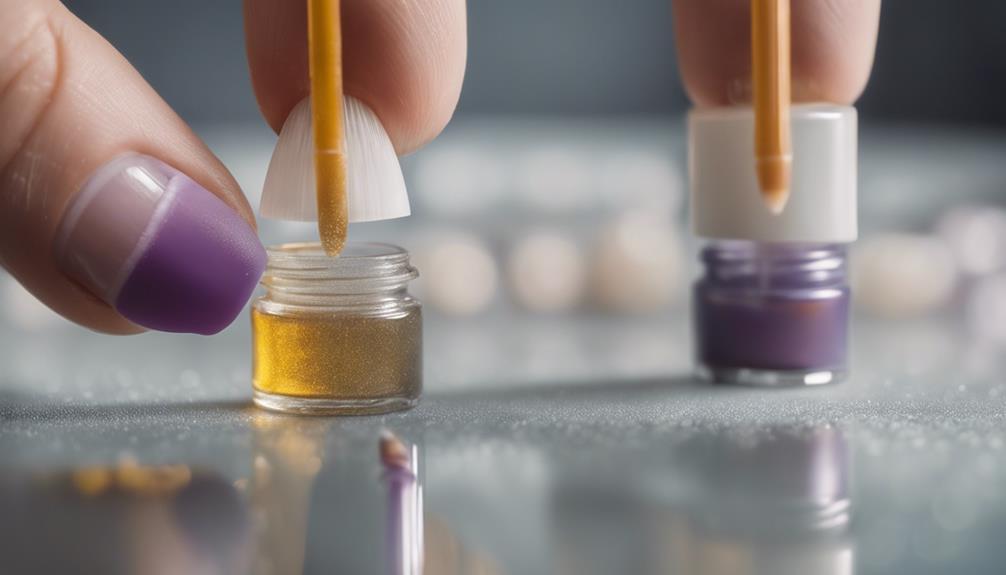
In distinguishing between nail adhesive and nail glue, a significant aspect to consider is the composition differences between these two products. Nail adhesive, commonly known as nail resin, is typically cyanoacrylate-based, a type of acrylic resin that forms a strong bond when it comes into contact with moisture.
On the other hand, nail glue is usually ethyl cyanoacrylate-based, which provides a quick-drying and durable bond suitable for attaching artificial nails or repairing natural nails. The chemical makeup of these products plays a crucial role in their bonding capabilities. Nail adhesives often contain additional ingredients like rubber for flexibility or various resins for enhanced strength, catering to different nail enhancement needs.
In contrast, nail glues are formulated to provide a strong and lasting bond without the need for curing under a UV or LED lamp. Understanding the composition variances between nail adhesive and nail glue is essential for achieving optimal results in nail enhancements and repairs.
Usage Distinctions
When it comes to using nail products, understanding the distinctions in their application is essential. Nail adhesive is typically used for attaching nail extensions, providing a strong and long-lasting bond.
On the other hand, nail glue is commonly utilized for intricate nail art designs, offering precision and quick drying capabilities.
Adhesive for Extensions
While both nail adhesive and nail glue are commonly used for extensions, the distinctions in their usage are crucial for achieving long-lasting and secure nail enhancements. Adhesive for extensions is designed to provide a strong bond that can withstand the everyday wear and tear on your nails.
To ensure proper extension maintenance, it is recommended to apply adhesive sparingly but evenly to avoid clumping or excess product buildup. When applying extensions, consider these application tips: clean the nail surface thoroughly, roughen the natural nail slightly for better adhesion, and press the extension firmly onto the nail for a few seconds to allow the adhesive to set properly.
Following these guidelines will help maintain the integrity of your nail extensions for an extended period.
Glue for Nail Art
For optimal results in nail art applications, understanding the distinctions in the usage of glue is essential to ensure precise and lasting designs.
When it comes to nail art, using glue specifically formulated for nail applications is crucial. Nail art glue is designed to adhere decorations like gems, studs, or decals onto the nail surface securely. This specialized adhesive provides a strong bond without damaging the nail or interfering with the nail polish.
Techniques such as encapsulating delicate designs or creating 3D nail art rely on the precise application of nail art glue. Keeping up with the latest nail care trends involves mastering the use of nail art glue to achieve intricate and long-lasting designs that stand out in the ever-evolving world of nail art.
Strength and Longevity
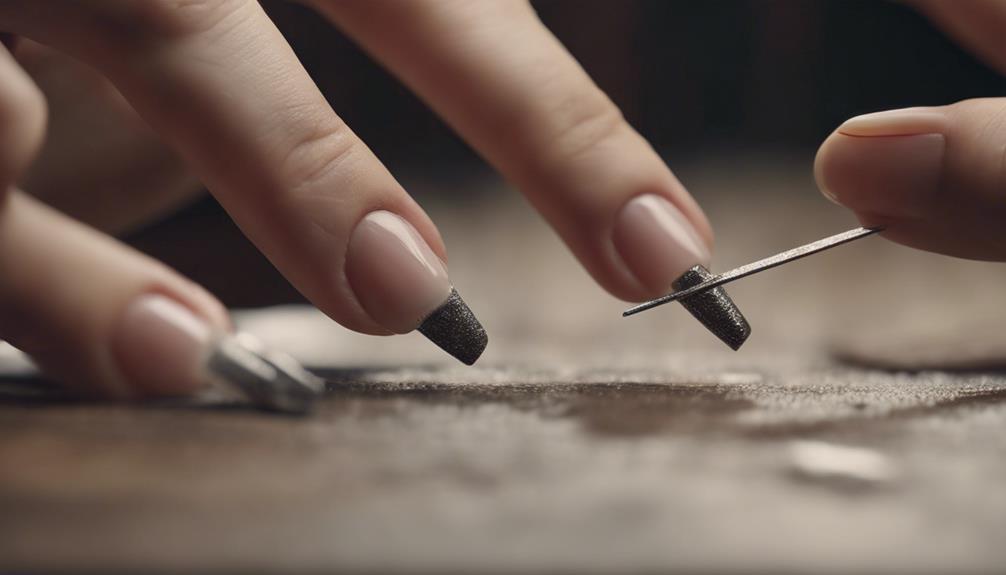
When comparing nail adhesive and nail glue, one crucial aspect to consider is their strength and longevity. Understanding how these products differ in terms of durability and how long they can hold your nails in place is essential for making an informed choice.
Let's explore the comparative durability and longevity of adhesive versus glue in the context of nail applications.
Adhesive Vs Glue Durability
In assessing the durability of nail adhesive versus nail glue, one crucial factor to consider is their strength and longevity. When comparing the durability of adhesive and glue for nail applications, it's essential to note that nail adhesive tends to offer a more flexible bond, making it ideal for temporary or short-term wear.
On the other hand, nail glue provides a stronger and longer-lasting bond, suitable for extended wear and more robust nail designs. To enhance the durability of both products, it is recommended to ensure proper application by following manufacturer guidelines and using the right amount of product.
Longevity Comparison Between Both
Considering the strength and longevity of nail adhesive versus nail glue, it is evident that nail glue generally provides a more durable bond compared to nail adhesive, particularly suited for long-term wear and intricate nail designs. Nail glue's strong adhesion properties make it ideal for individuals seeking lasting results.
Application tips for nail glue include applying a thin, even layer and avoiding excessive use to prevent clumping. While nail adhesive can be convenient for temporary fixes, it may not withstand prolonged wear or intricate designs as effectively as nail glue.
A comparison study on the maintenance routine of nails bonded with adhesive versus glue could provide valuable insights into their respective longevity and durability. Understanding the pros and cons of each product is key to selecting the most suitable option for individual nail care needs.
Removal Methods
Using acetone-based nail polish remover is the most common and effective method for removing both nail adhesive and nail glue from the nails. While some may opt for chemical solutions due to their efficiency, others prefer soaking methods for a more gentle removal process. Professional nail technicians often rely on acetone for its powerful solvent properties, ensuring quick and thorough removal without causing damage to the natural nails.
On the other hand, DIY enthusiasts may choose soaking methods using acetone or warm, soapy water for a more gradual approach that prioritizes nail health.
For those looking to remove nail adhesive or glue at home, DIY soaking methods can be a cost-effective and gentle alternative to professional chemical solutions. Soaking the affected nails in acetone or warm, soapy water can help soften the adhesive, making it easier to gently peel or push off without causing undue stress to the nail bed. Experimenting with different removal techniques can help individuals find the method that works best for their nails, whether they prefer a professional or a more hands-on approach.
Application Techniques
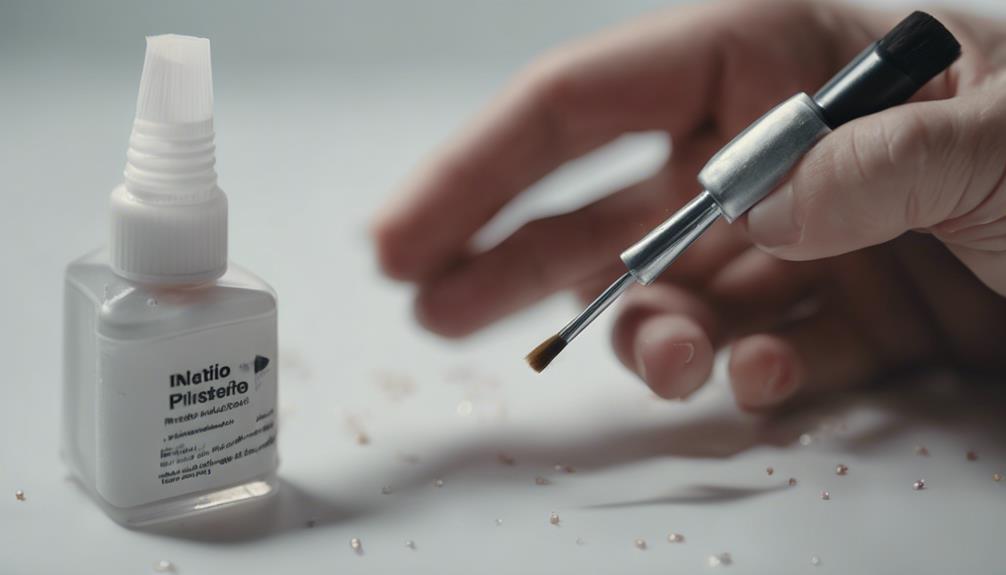
When applying nail adhesive or nail glue, precision and consistency are crucial for achieving long-lasting results. To ensure a flawless application, start by preparing your nails through proper cleaning and shaping. When using adhesive, remember that removal techniques may vary depending on the type of adhesive used. For glue application, a small amount is often all that's needed to securely bond the nail. It's essential to avoid excess glue, as this can lead to a messy finish and potential damage to the natural nail.
When applying nail adhesive, consider using a brush-on adhesive for more precise application, while nail glue typically comes in a convenient tube for easy dispensing. Regardless of the product chosen, always follow the manufacturer's instructions for the best results. Remember that proper removal of adhesive or glue is just as important as application techniques to maintain healthy nails. By mastering the art of nail adhesive and glue application, you can achieve professional-looking manicures that stand the test of time.
Recommended Products
For those seeking reliable options for nail adhesives and nail glues, reputable brands in the beauty industry offer a range of high-quality products to choose from. When it comes to nail adhesives, brands like Kiss New York and Nailene have gained popularity for their strong bonding formulas that ensure long-lasting nail applications. These adhesives are not only suitable for attaching artificial nails but also for repairing natural nails with precision.
On the other hand, nail glues from brands such as IBD and Mia Secret are favored for their quick-drying properties and excellent adhesion to various nail surfaces.
In addition to nail adhesives and glues, it's essential to have the right tools in your nail care kit. Alongside these products, investing in high-quality nail polish and reliable nail files is crucial for maintaining healthy and beautiful nails. Brands like OPI and Essie offer a wide range of nail polish colors with long-lasting formulas, while crystal nail files from Mont Bleu are known for their durability and gentle filing capabilities.
Frequently Asked Questions
Can Nail Adhesive and Nail Glue Be Used Interchangeably?
Nail adhesive and nail glue are not always interchangeable. Nail adhesive is typically milder and used for temporary applications, while nail glue is stronger and more long-lasting. Understanding the differences can enhance application techniques and simplify the removal process.
Are There Any Safety Concerns With Using Nail Adhesive or Nail Glue?
When considering nail adhesive or nail glue, prioritize safe application techniques and necessary safety precautions. Be mindful of potential allergies and exercise caution during product removal to ensure a positive and innovative nail enhancement experience.
Can Nail Adhesive or Nail Glue Damage Natural Nails?
Nail adhesives and nail glues, if not applied or removed properly, can potentially damage natural nails. Careful application techniques, gentle removal methods, and understanding potential allergic reactions are crucial for maintaining nail health and preventing harm.
How Long Does Nail Adhesive and Nail Glue Typically Last on the Nails?
The longevity of nail adhesive and nail glue varies based on factors like application techniques and the quality of the product. Proper removal processes can help maintain the integrity of natural nails. Innovation in formulations enhances durability.
Are There Any Tips for Maximizing the Strength and Longevity of Nail Adhesive or Nail Glue?
To maximize the strength and longevity of nail adhesive or glue, ensure proper application by cleaning nails, avoiding water exposure initially, and applying pressure during drying. Use quality products, follow removal techniques, and incorporate nail care suggestions for optimal results.
Conclusion
In conclusion, nail adhesive and nail glue are both used for attaching artificial nails, but they have key differences in composition, strength, and removal methods. Nail adhesive is typically more flexible and long-lasting, while nail glue tends to provide a stronger bond.
One interesting statistic is that the global nail care market is projected to reach $11.6 billion by 2027, indicating the popularity and demand for these products.

